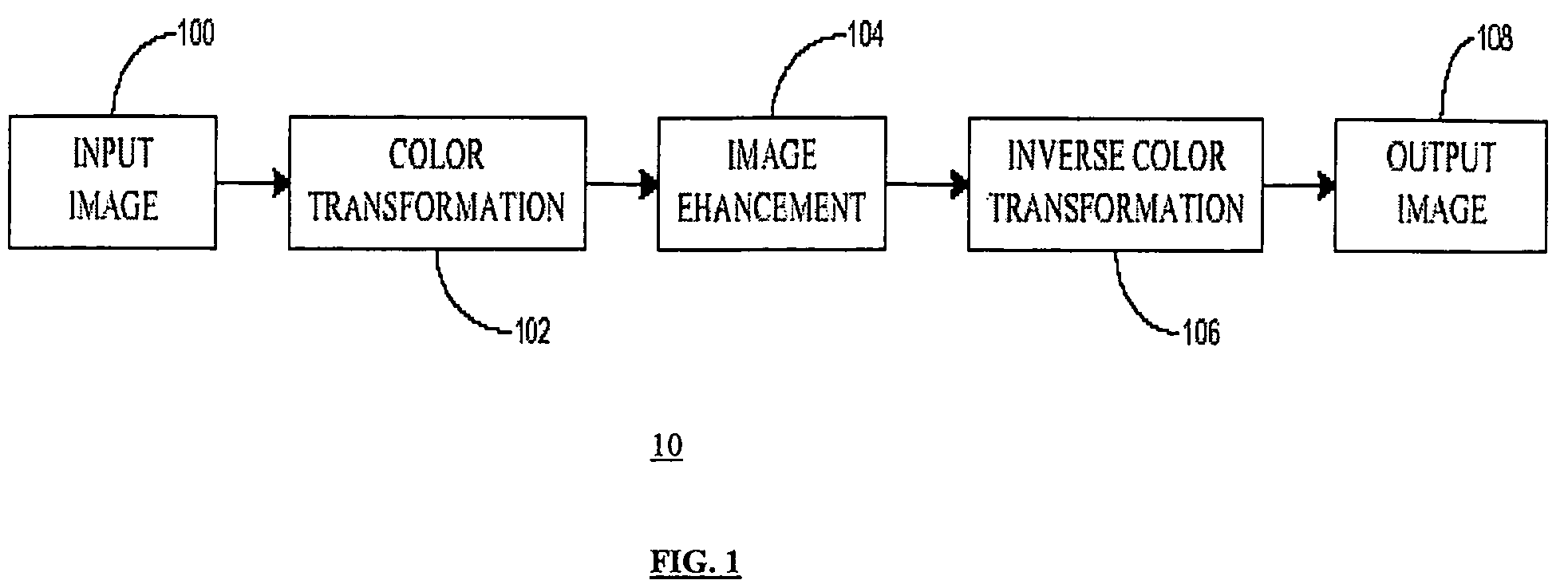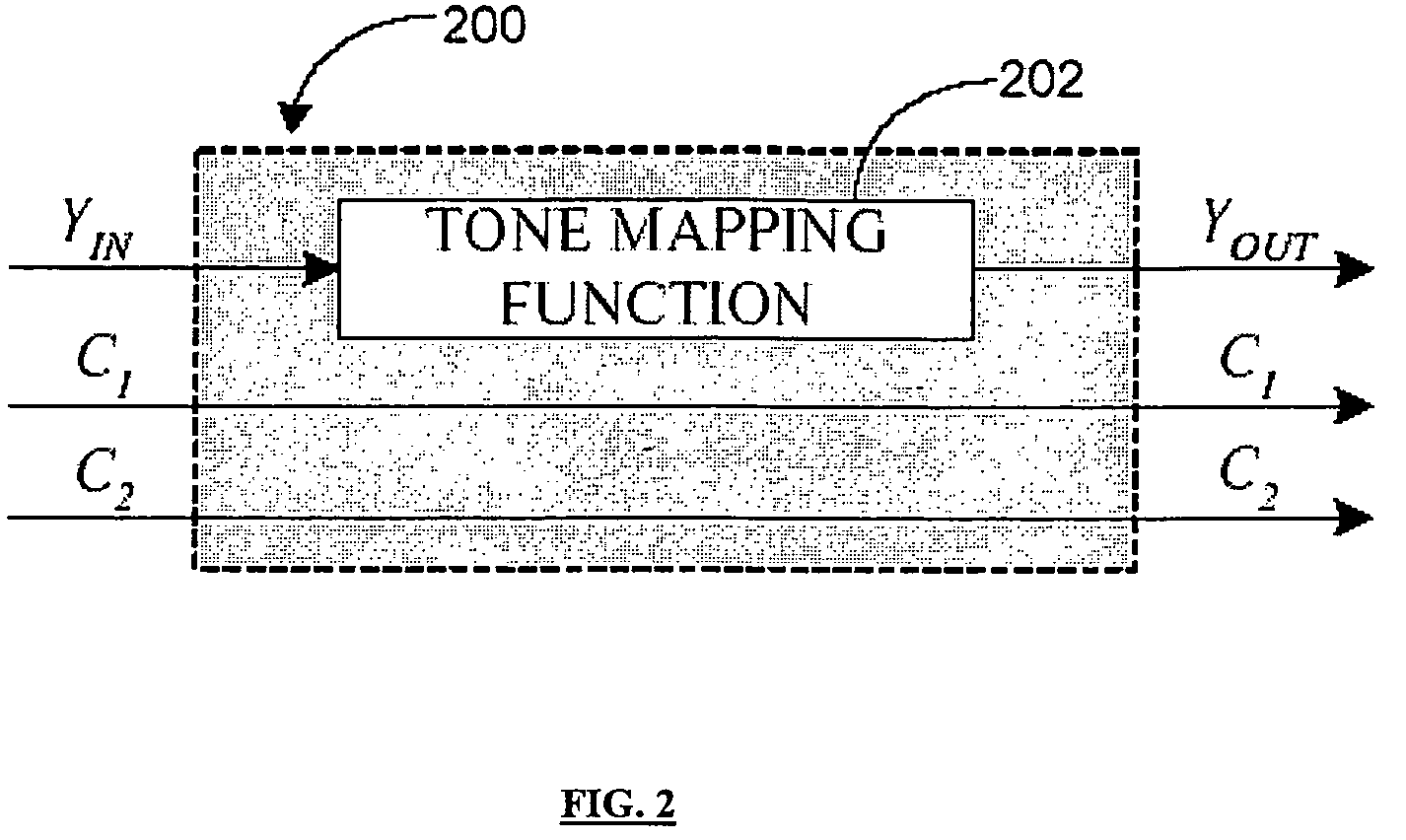Method and apparatus for image processing based on a mapping function
a mapping function and image processing technology, applied in the field of methods, can solve the problems of color constancy, system deficiency in reproducing images with the same level of detail, and substantial difference between how an image is perceived by a person and an image captured and reproduced on a display medium,
- Summary
- Abstract
- Description
- Claims
- Application Information
AI Technical Summary
Benefits of technology
Problems solved by technology
Method used
Image
Examples
Embodiment Construction
[0014]A example method and apparatus of improving details in a digital image according to an embodiment of the present invention is described. Accordingly, details for a digital image are enhanced while brightness and color constancy are preserved. At a given point (e.g., pixel) in the image, a determination is made as to whether the pixel “path elements” constituting a path are brighter or darker than the point. The output of the given point is adjusted to generate an enhanced value from averaging the outputs of path-computations selected against the given point.
[0015]FIG. 1 shows a block diagram of an image processing system 10 according to an embodiment of the present invention. An image is captured and digitized in block 100 according to well-known techniques, wherein the digitized image is represented by discrete areas referred to as pixels. In one example, the digitized image comprises three color channels, which are Red, Green, and Blue channels (also known as RGB). The color...
PUM
 Login to View More
Login to View More Abstract
Description
Claims
Application Information
 Login to View More
Login to View More - R&D
- Intellectual Property
- Life Sciences
- Materials
- Tech Scout
- Unparalleled Data Quality
- Higher Quality Content
- 60% Fewer Hallucinations
Browse by: Latest US Patents, China's latest patents, Technical Efficacy Thesaurus, Application Domain, Technology Topic, Popular Technical Reports.
© 2025 PatSnap. All rights reserved.Legal|Privacy policy|Modern Slavery Act Transparency Statement|Sitemap|About US| Contact US: help@patsnap.com



